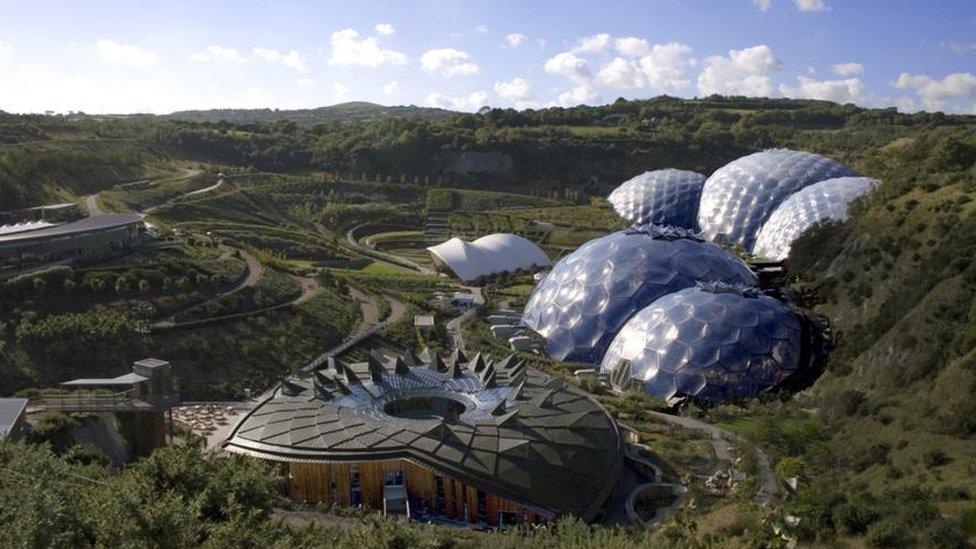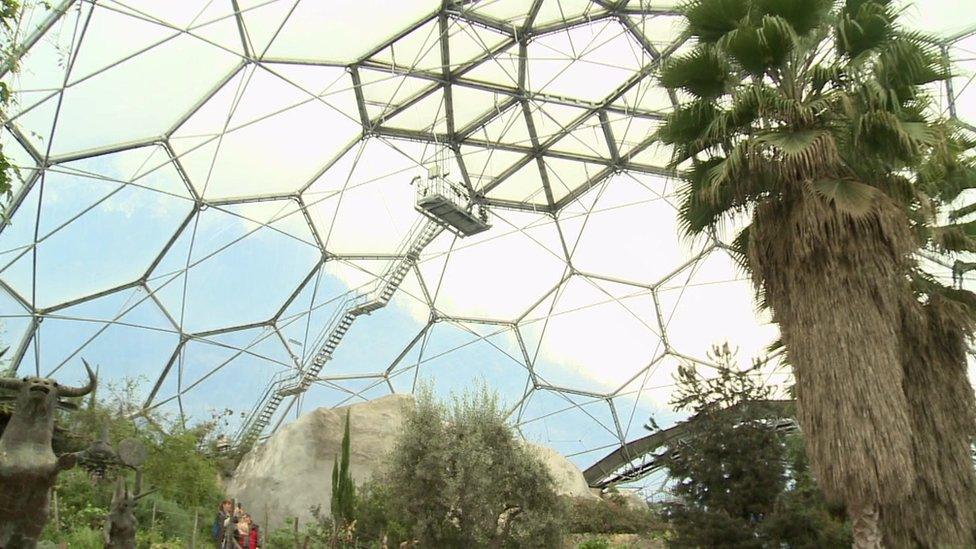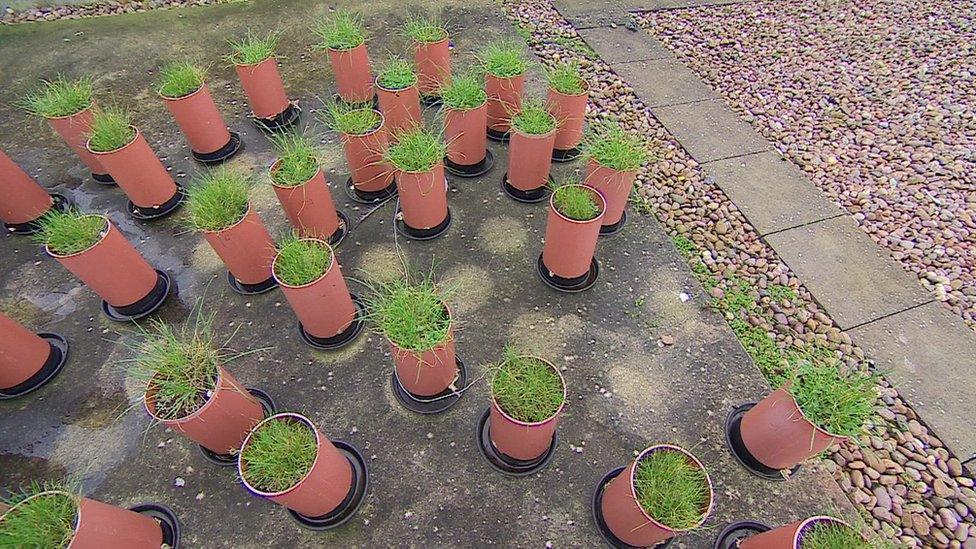Eden Project investigates soil future with Plymouth University
- Published

Eden Project biomes house "the largest rainforest in captivity" and a large selection of exotic plants
The Eden Project is working with scientists to examine how to make its man-made soil sustainable in future.
Experts at the famous visitor attraction in Cornwall said most glass houses changed their soil every five years to remove pests and diseases but its own topography made that unviable.
Researchers from Plymouth University are now analysing the soil biology.
They said their discoveries could help to protect top soils elsewhere from the effects of climate change.

The Eden Project was built nearly 20 years ago in what bosses called a "huge crater"
The Eden Project, described as an educational charity, was created 18 years ago in barren post-industrial clay pits in a remote spot near St Austell.
Bosses say the 83,000-tonne top soil, which is 1m (3ft) deep and made from a mix of local waste products, has never been replaced as it would not be viable logistically or financially.
Dr Rachel Warmington, science team manager, said the research was about how to manage the soil going forward.
"It means that when we come to do new exhibits, such as the western Australia exhibit, that if we need to alter those recipes then we have the opportunity with Plymouth to look at the best ways to do that," she said.

Researchers say the research was paid for by EU funding
Dan Evans, a researcher from the university, said: "It's not clear underneath how the soil is actually functioning and what needs to be done, if anything, to ensure that it remains as sustainable as possible.
"There are lots of predictions about how the climate might change and that's likely to have an effect on soils, and likely to be a negative effect on natural top soils.
"We want to see if we can design a soil that will make it as resilient as possible."